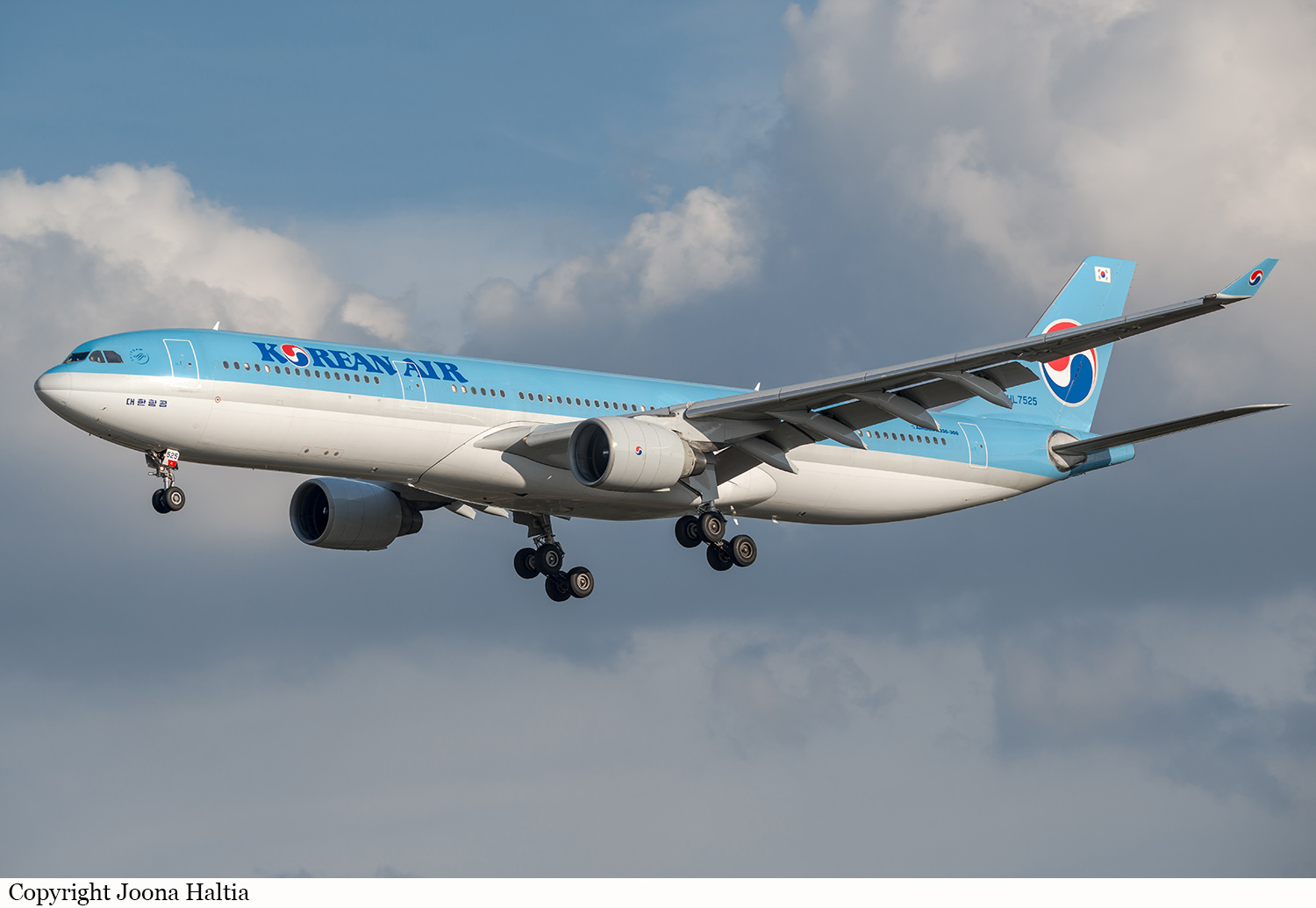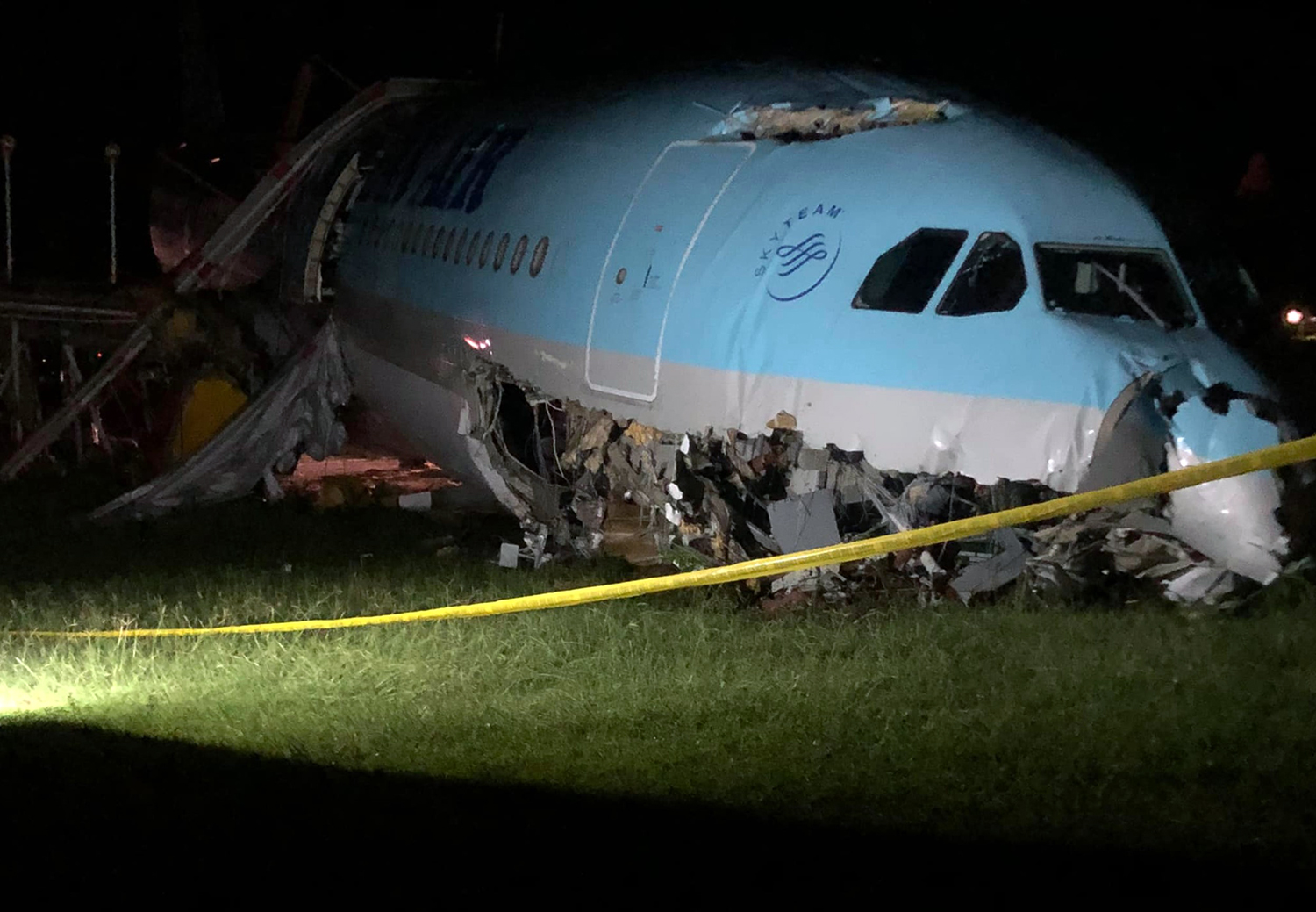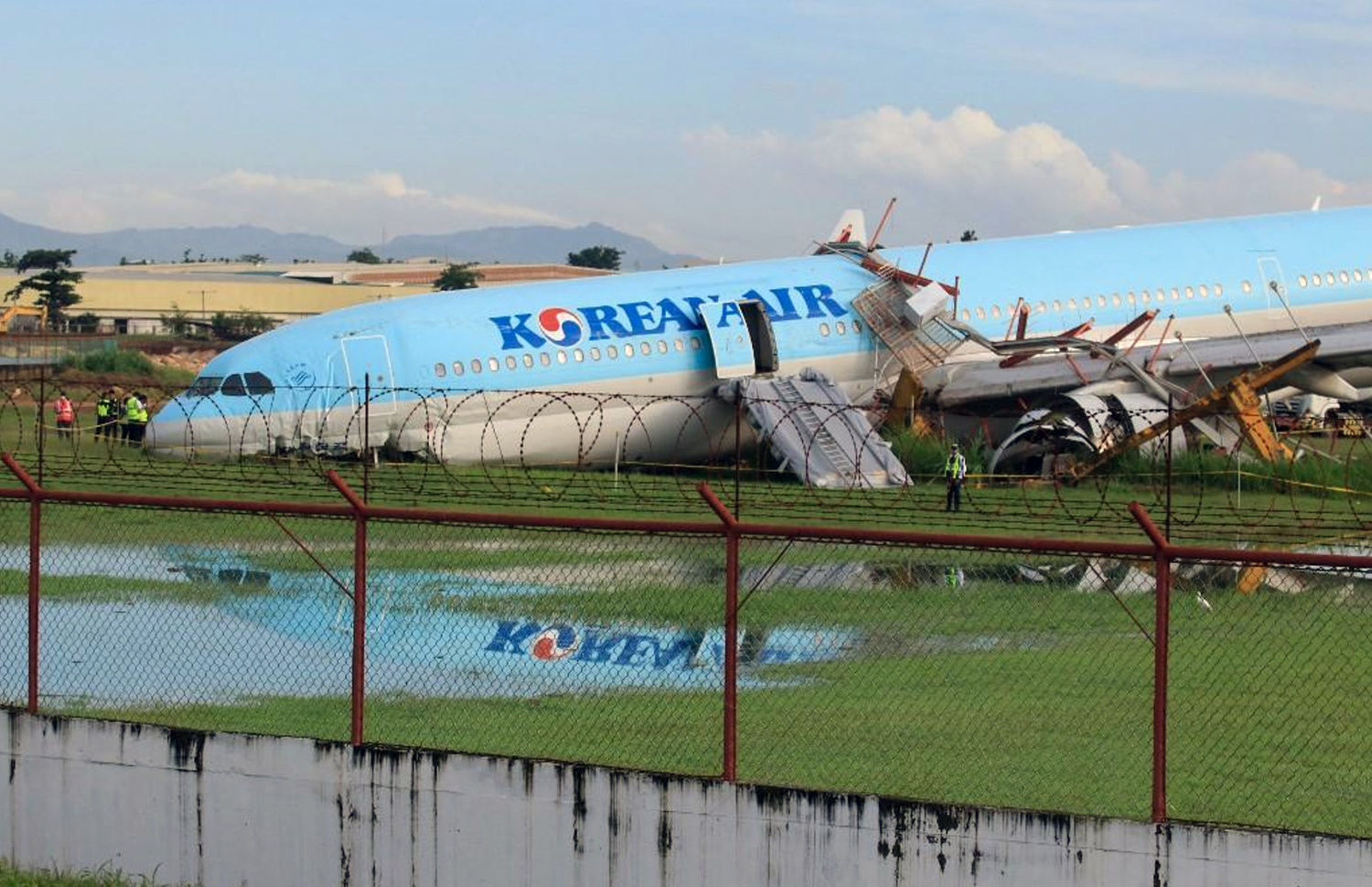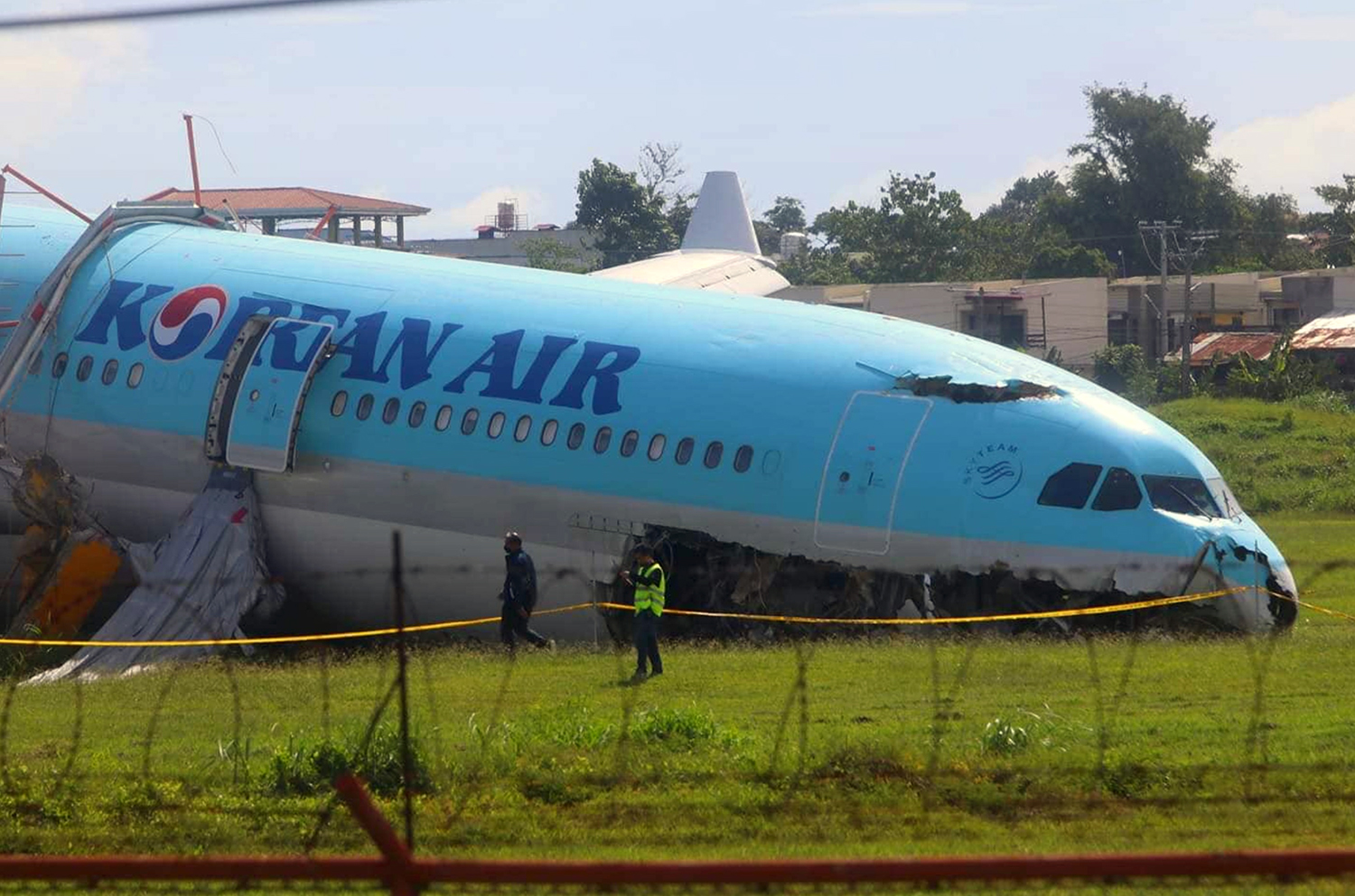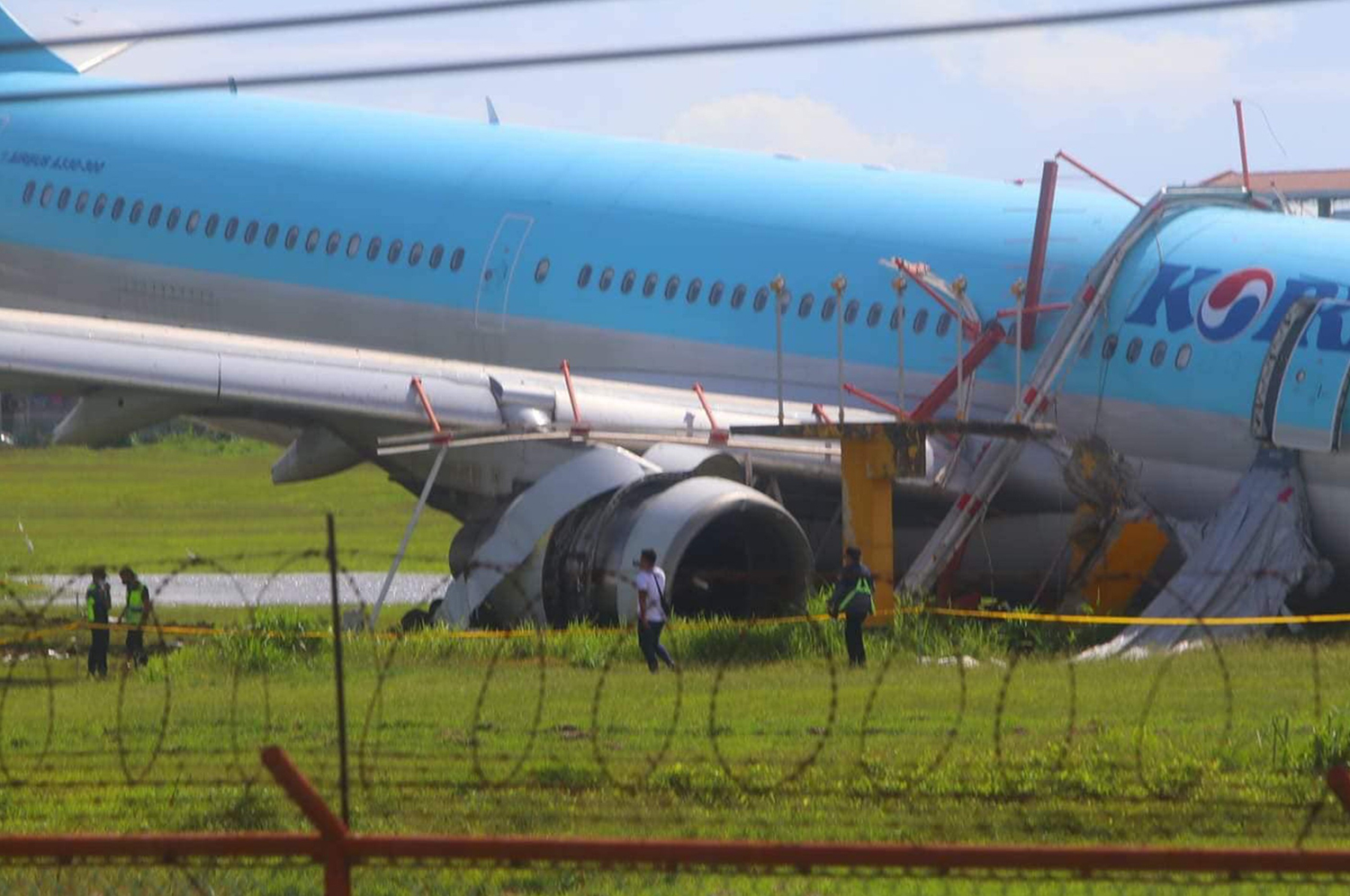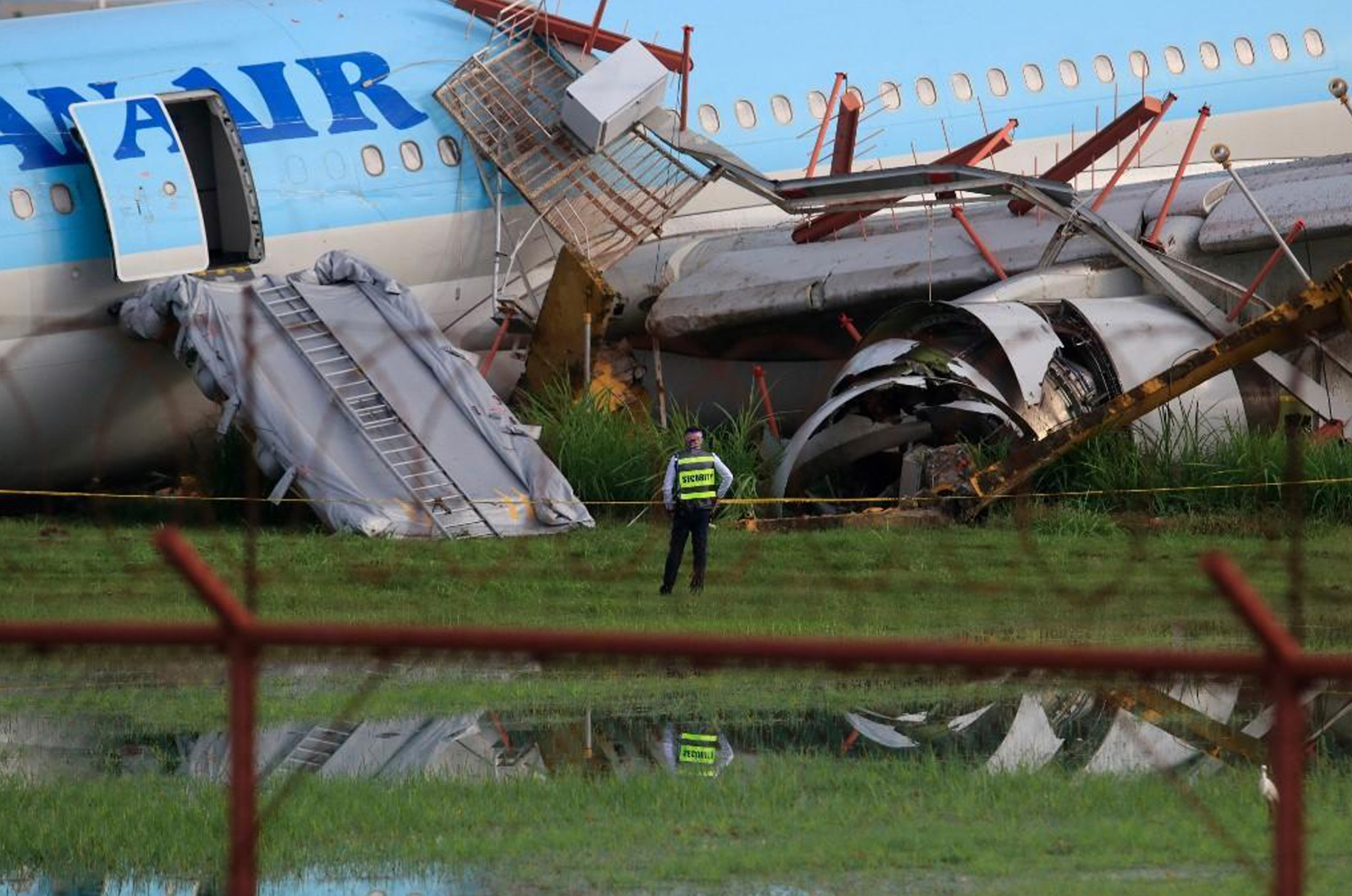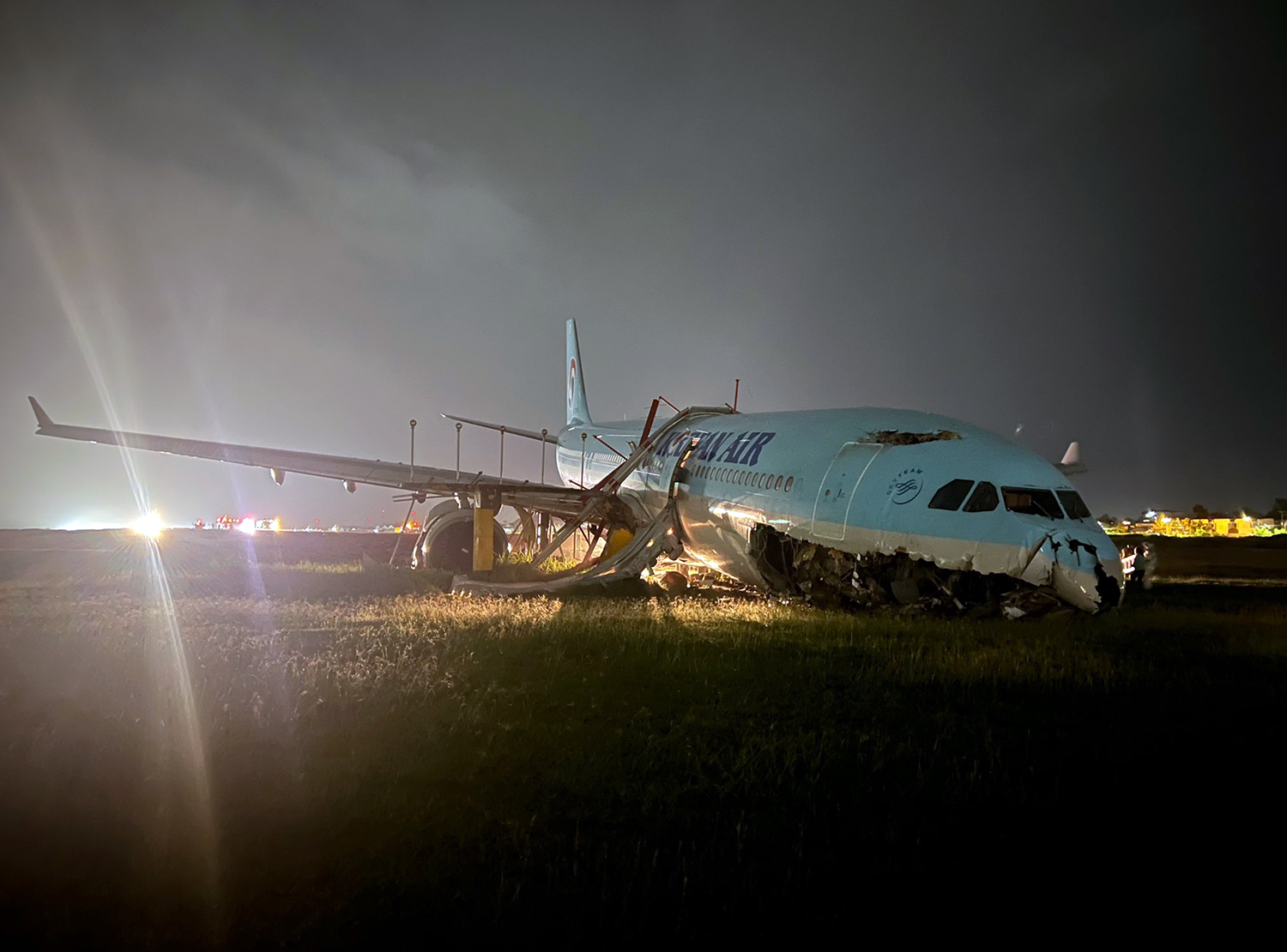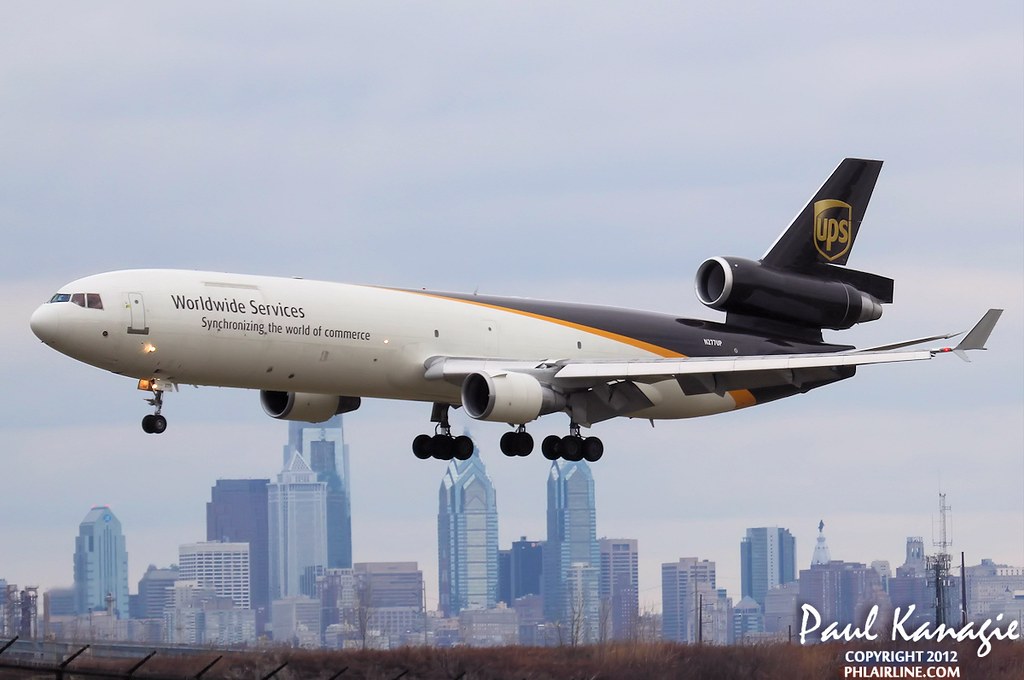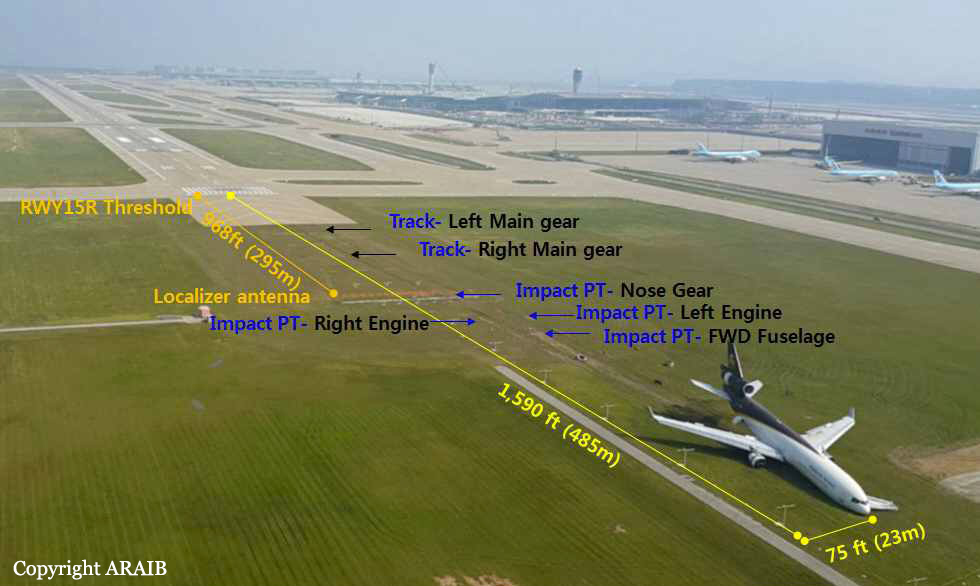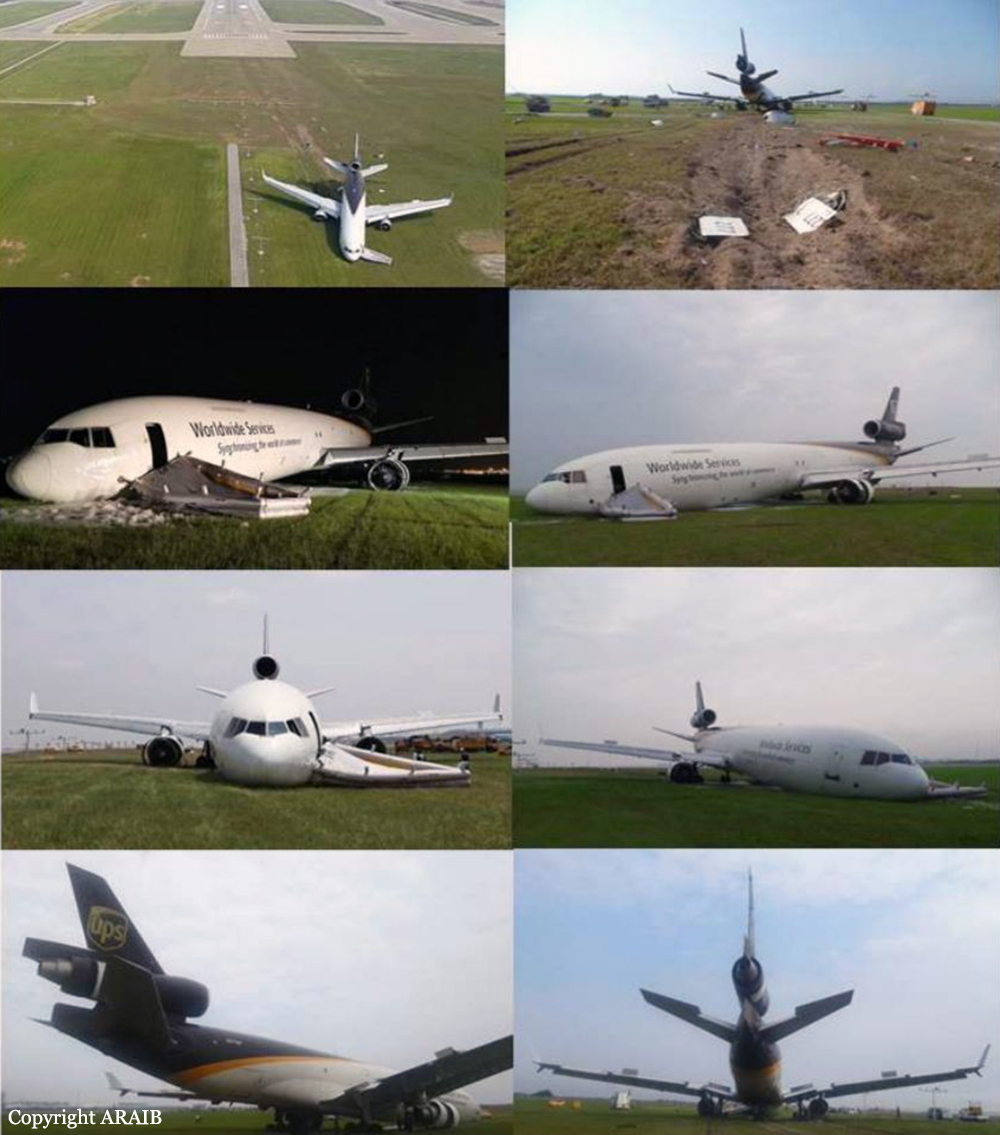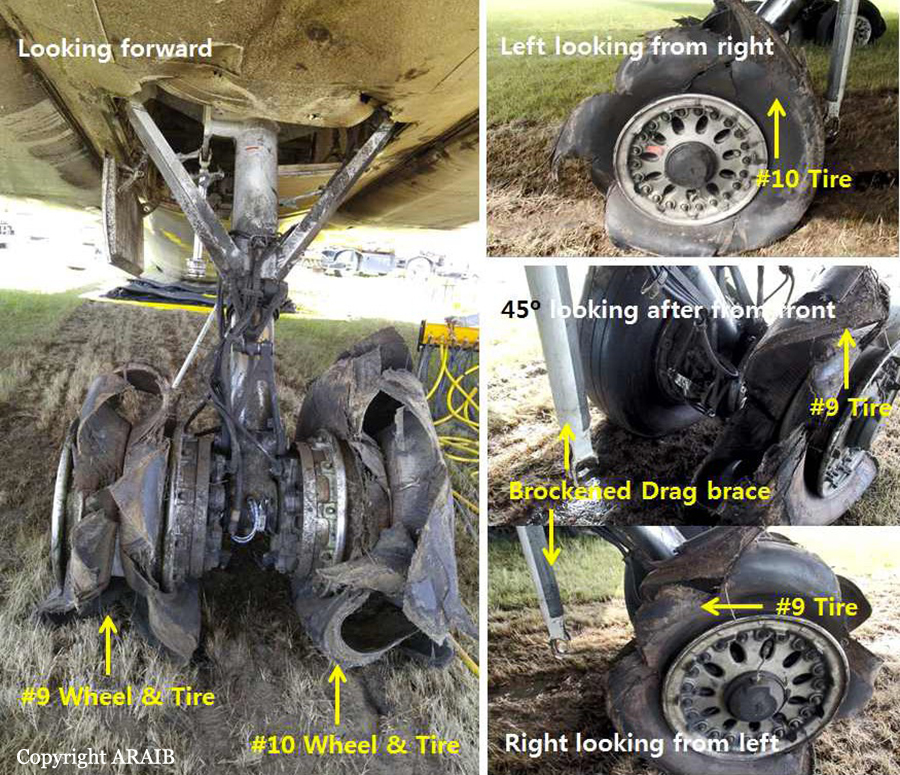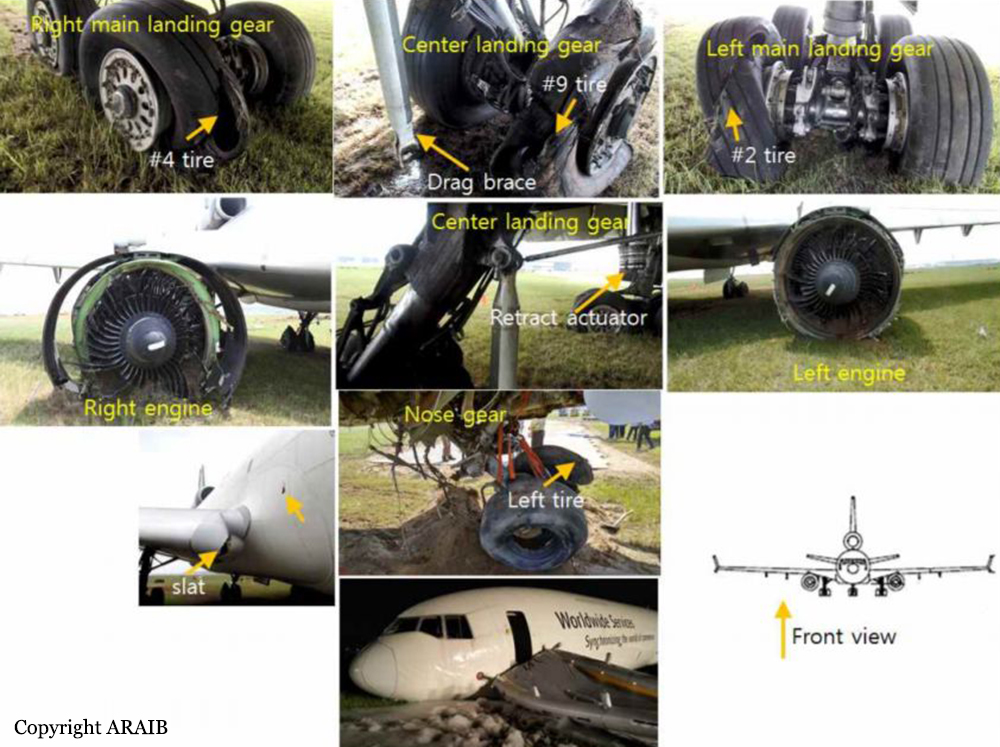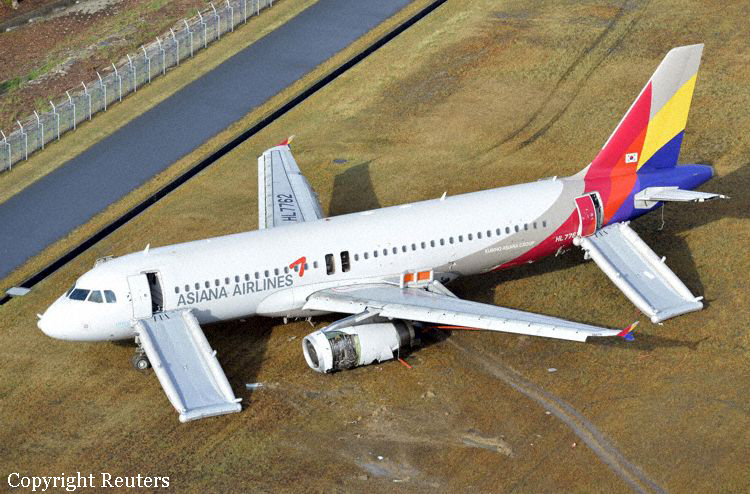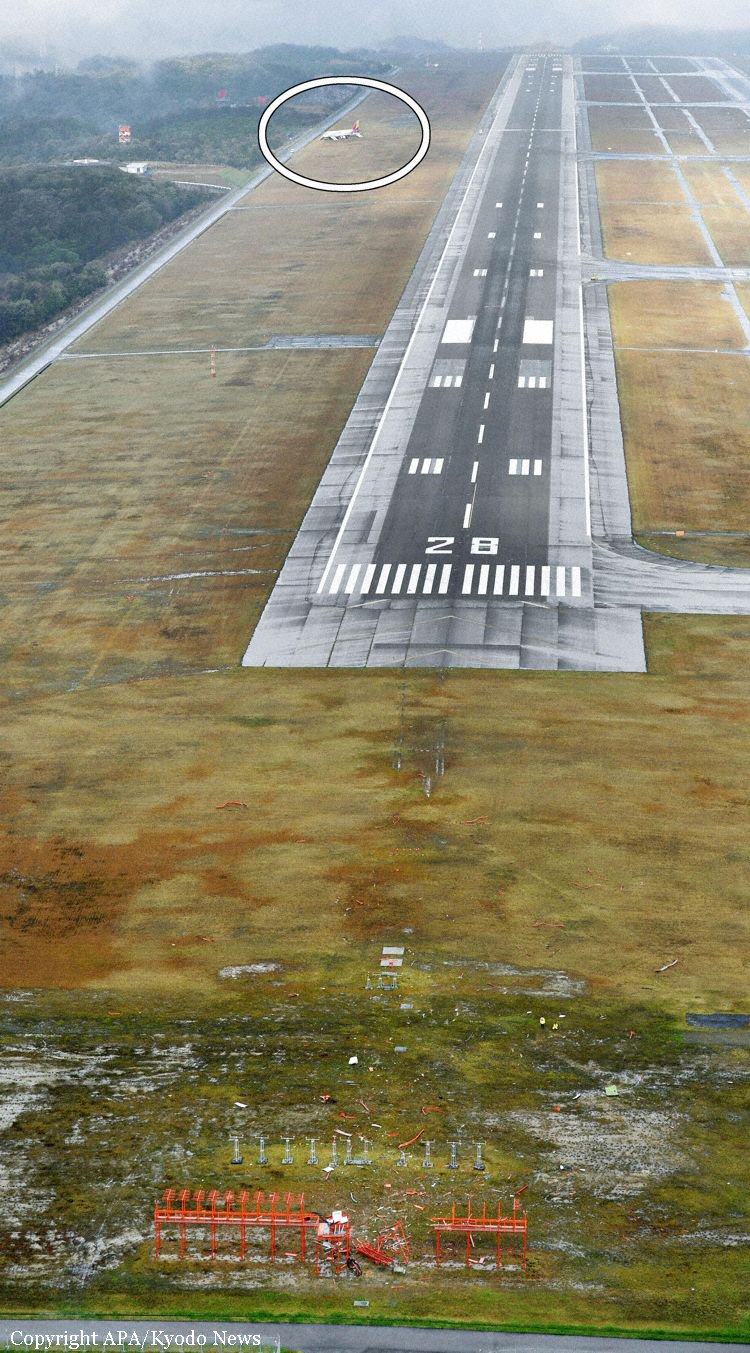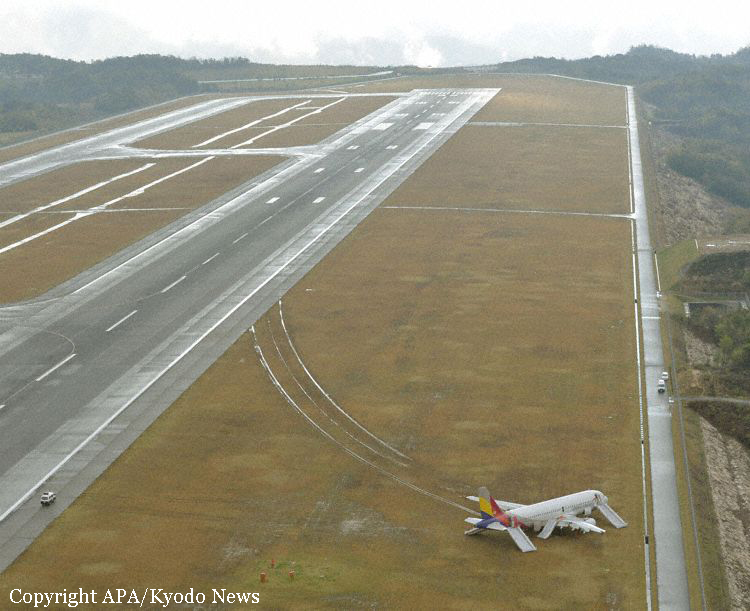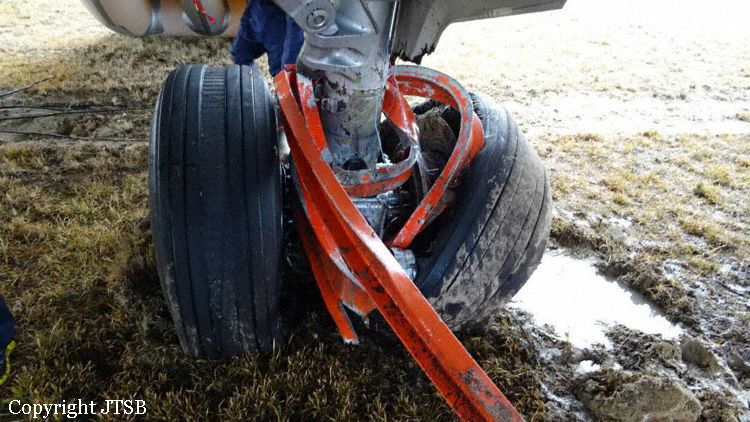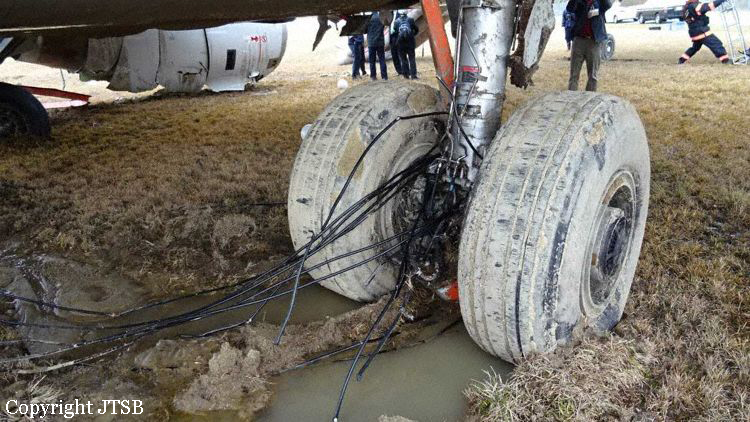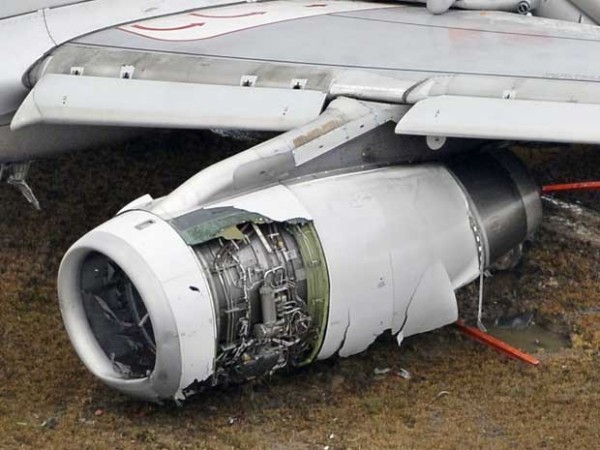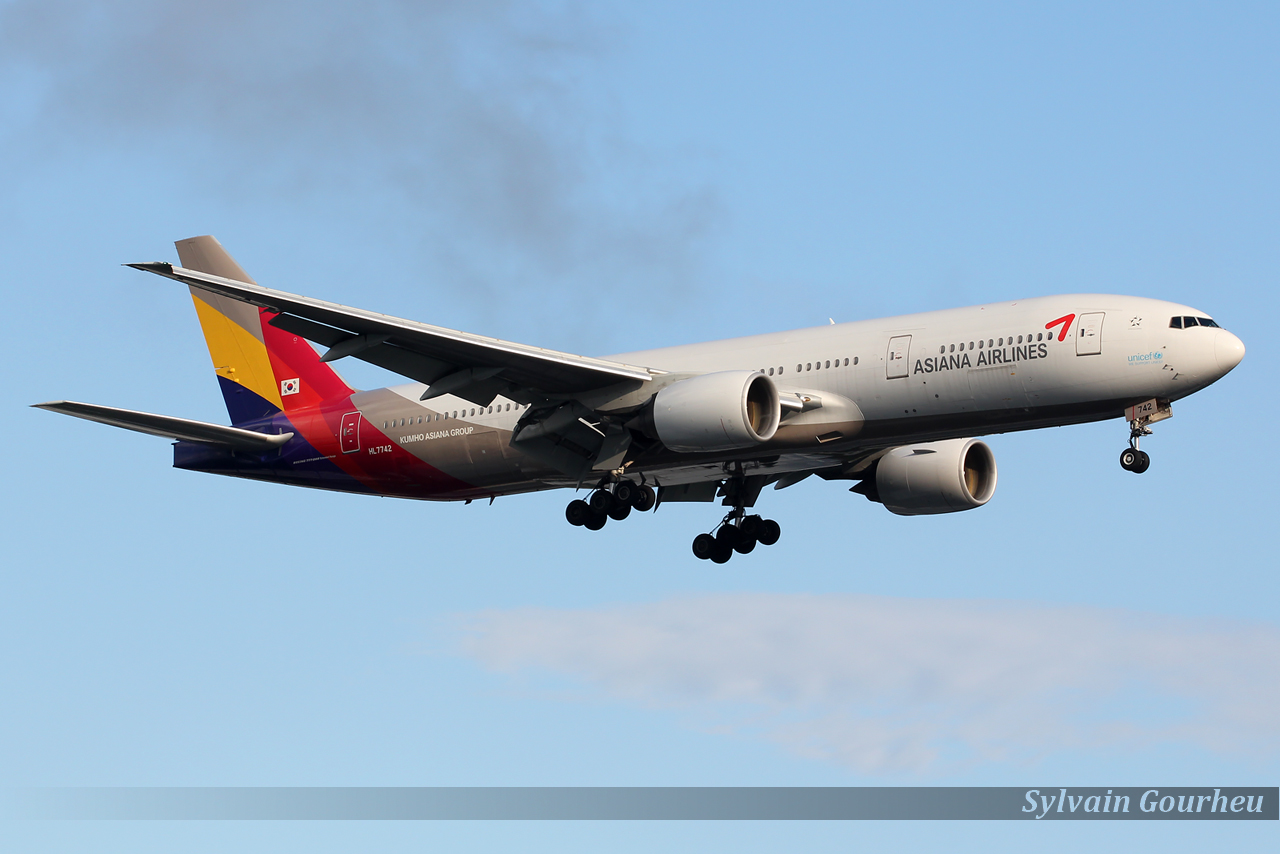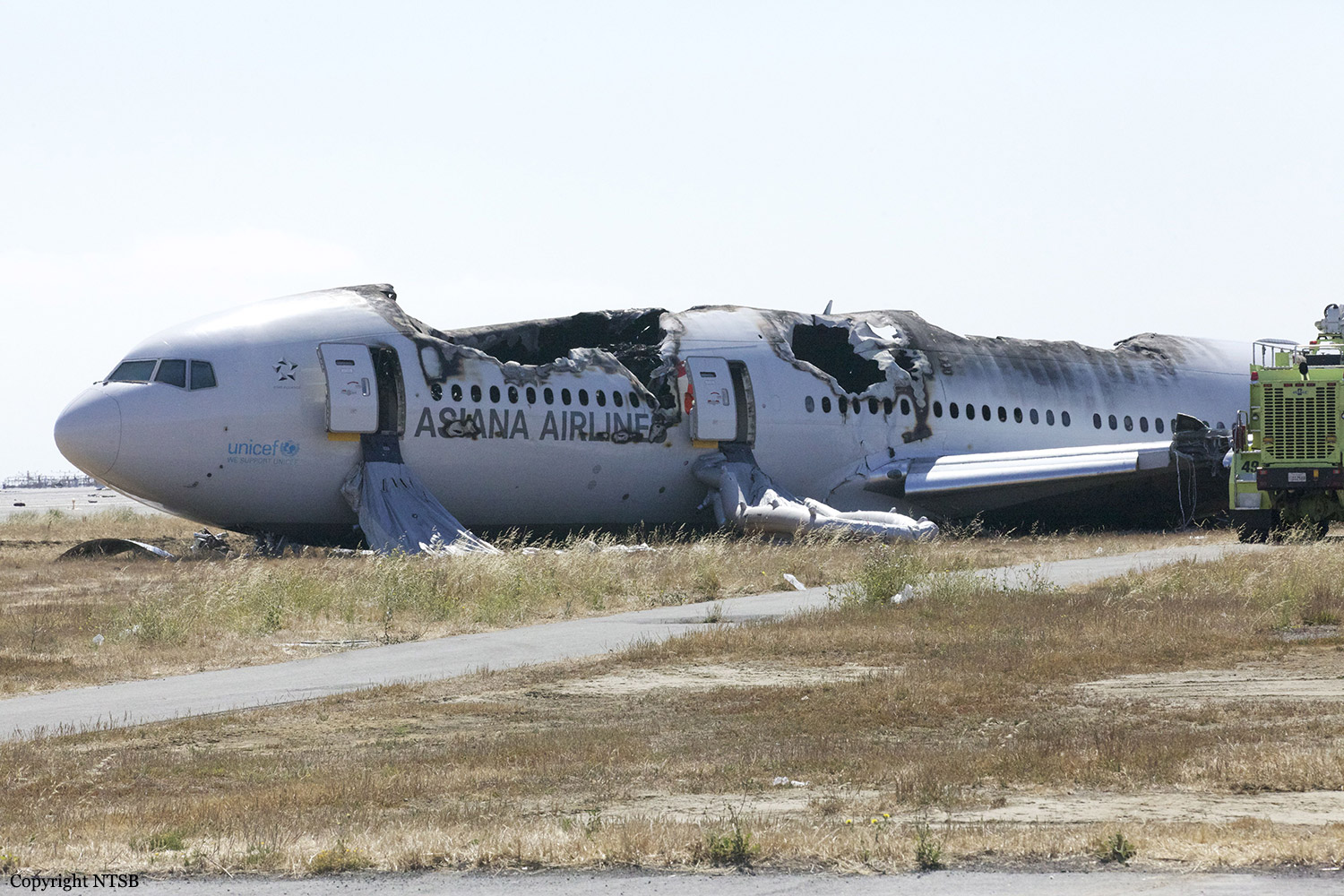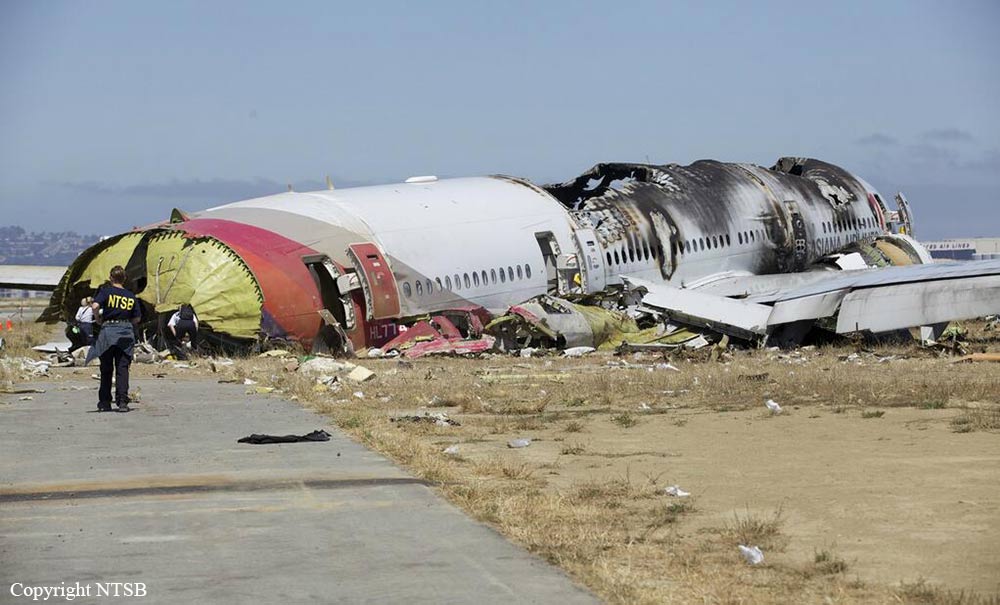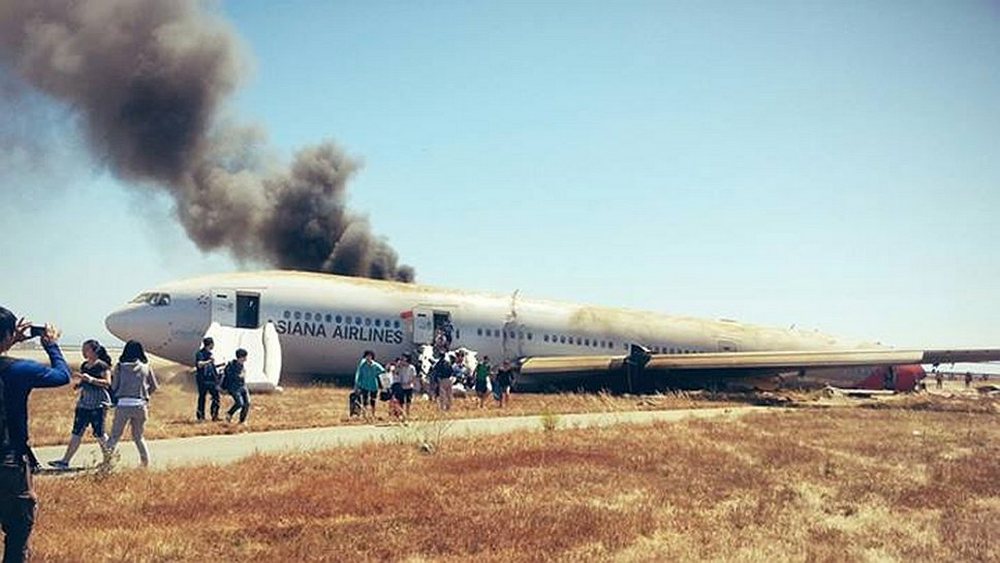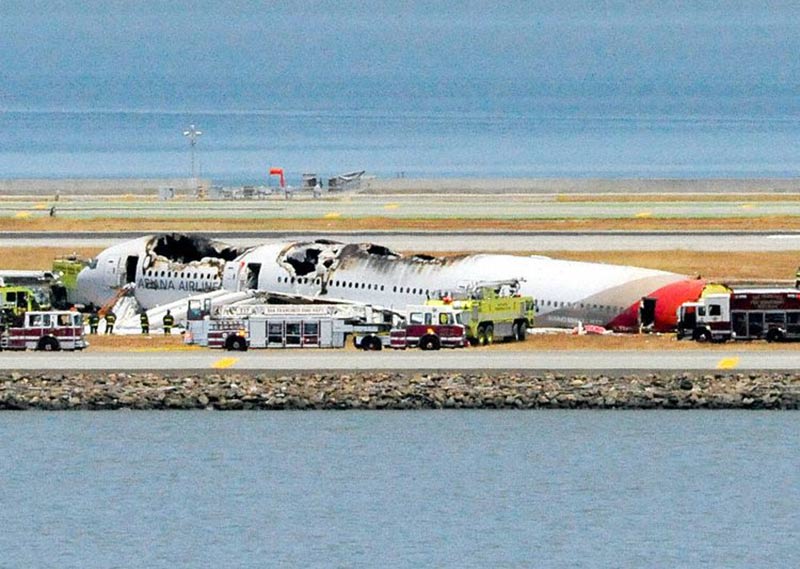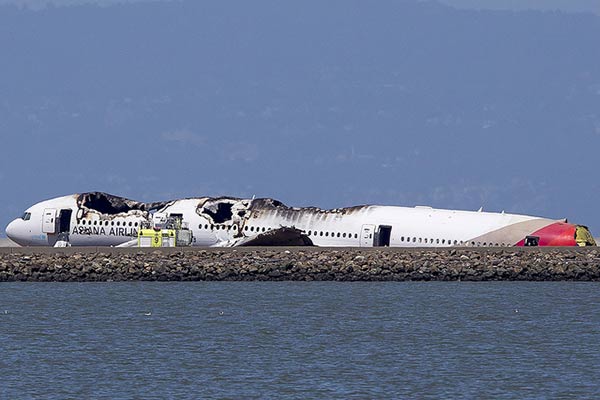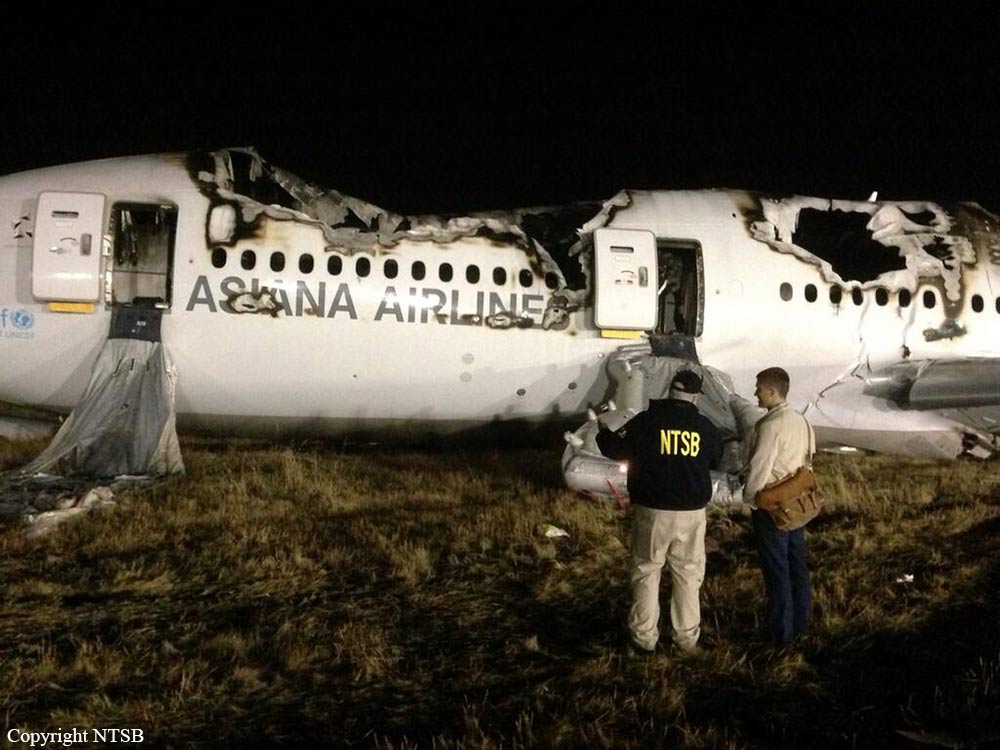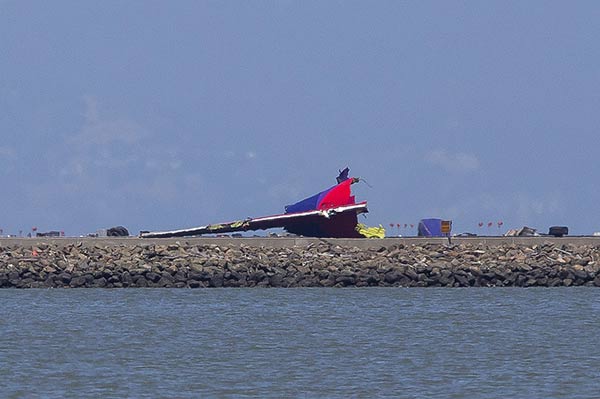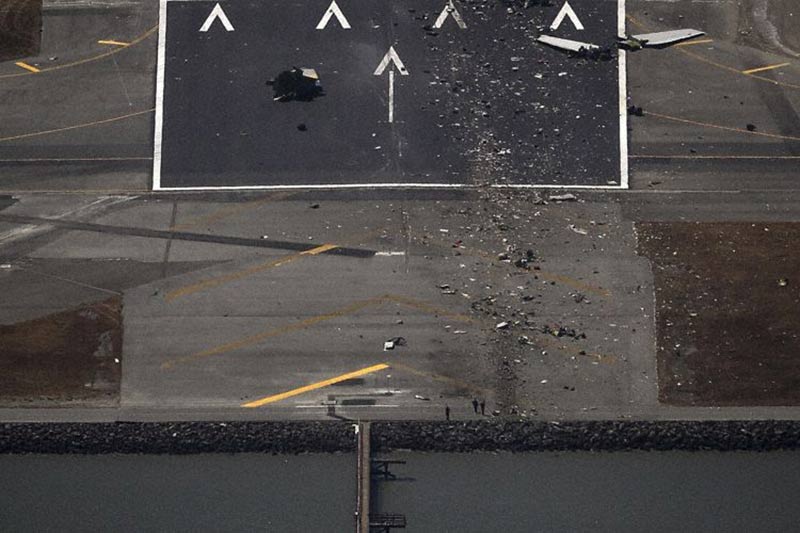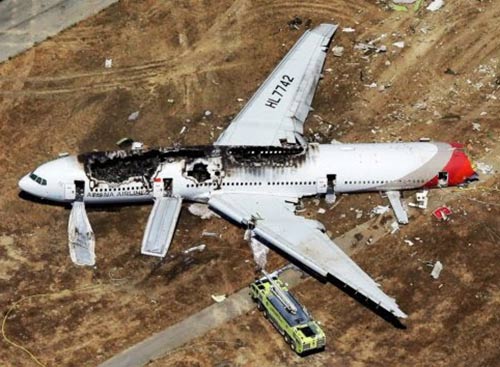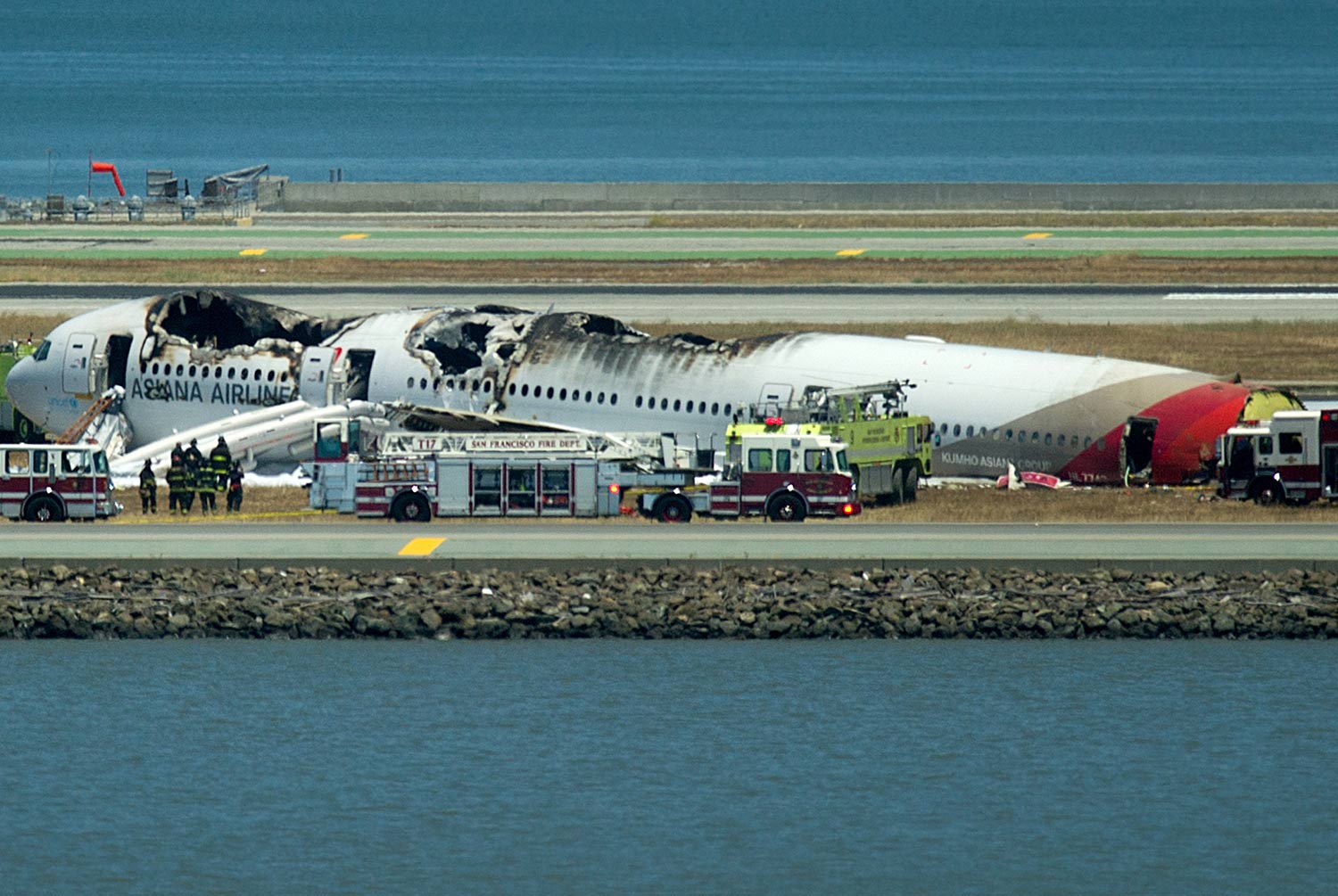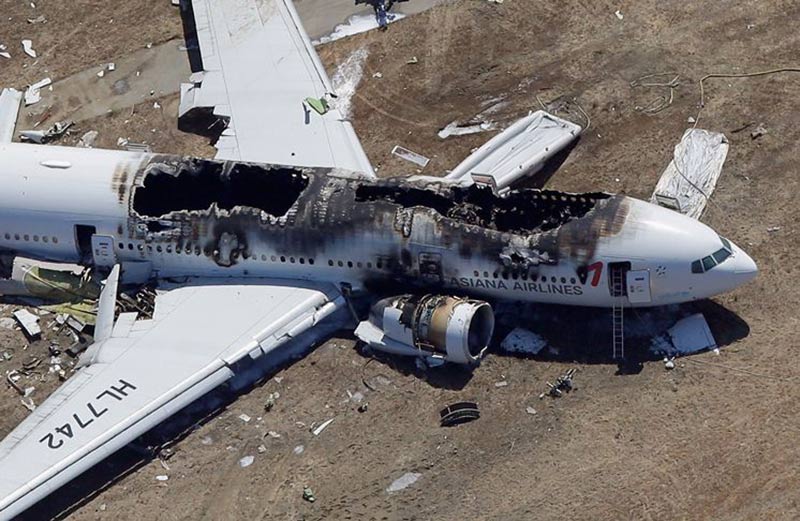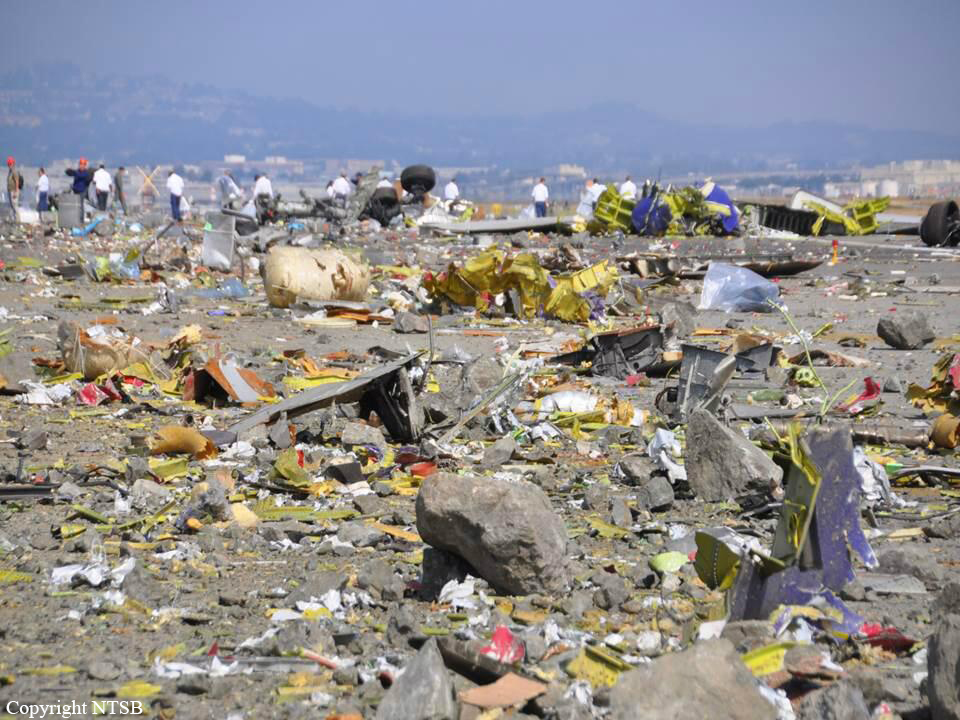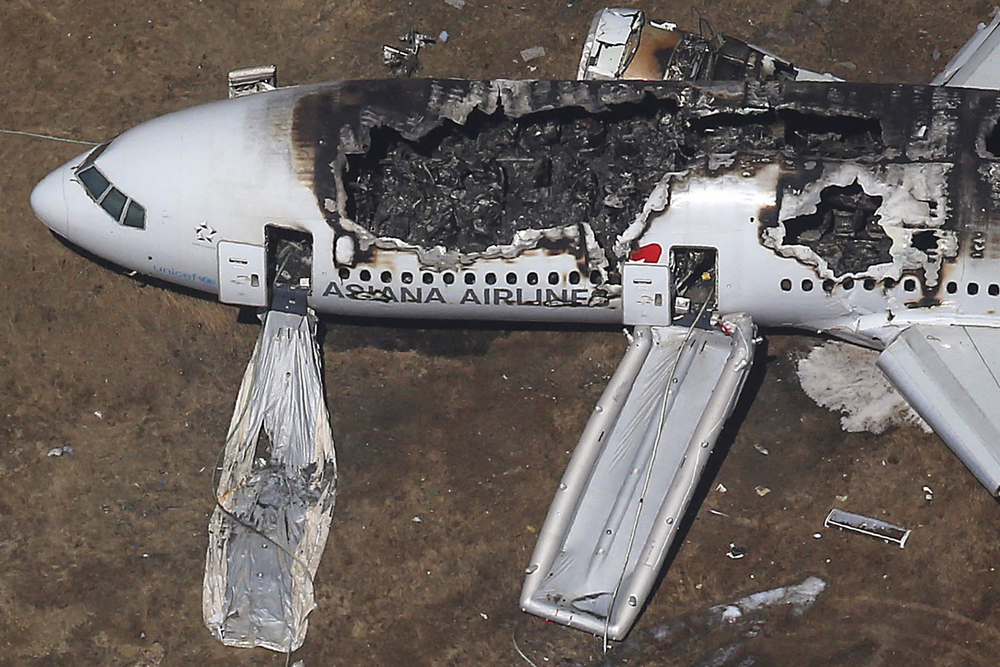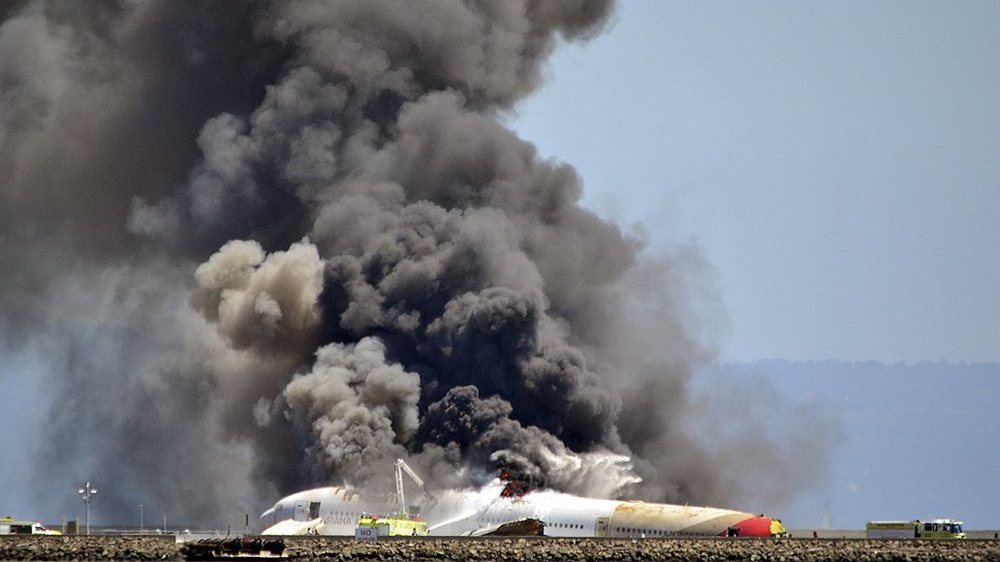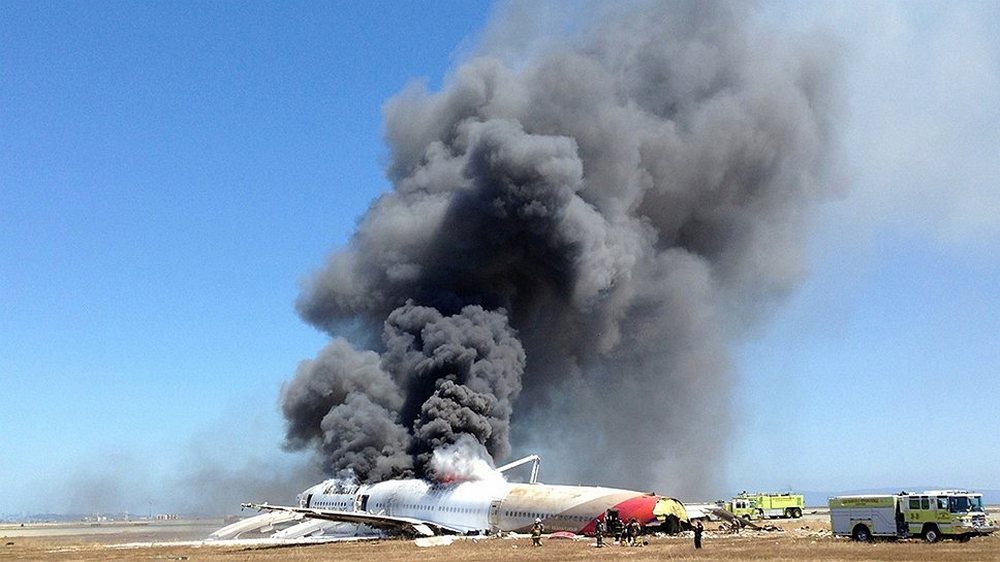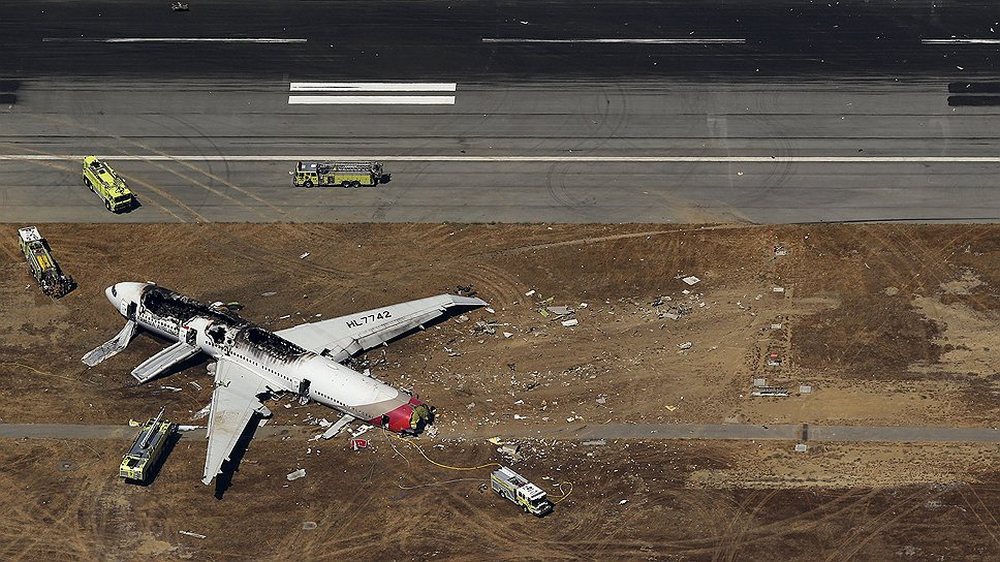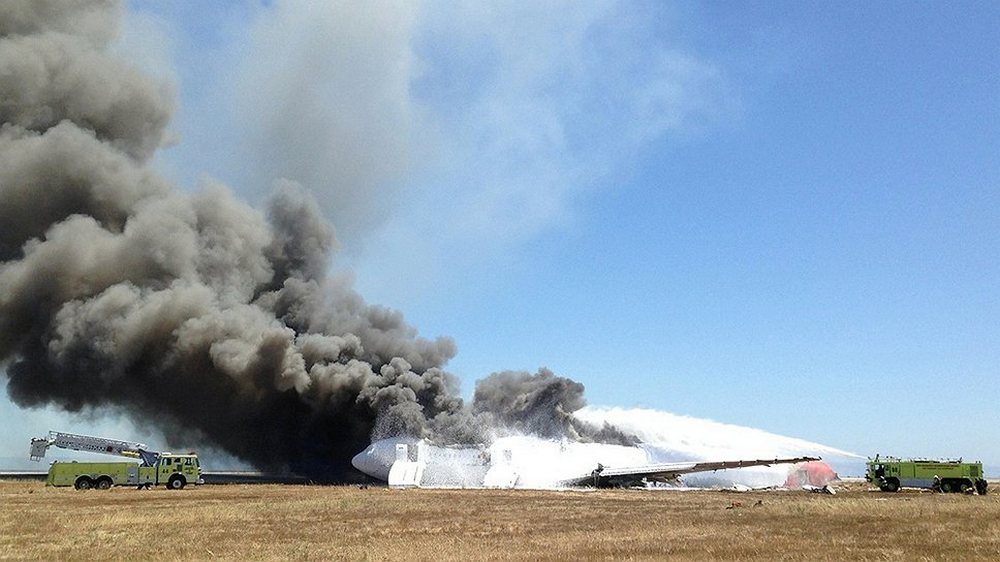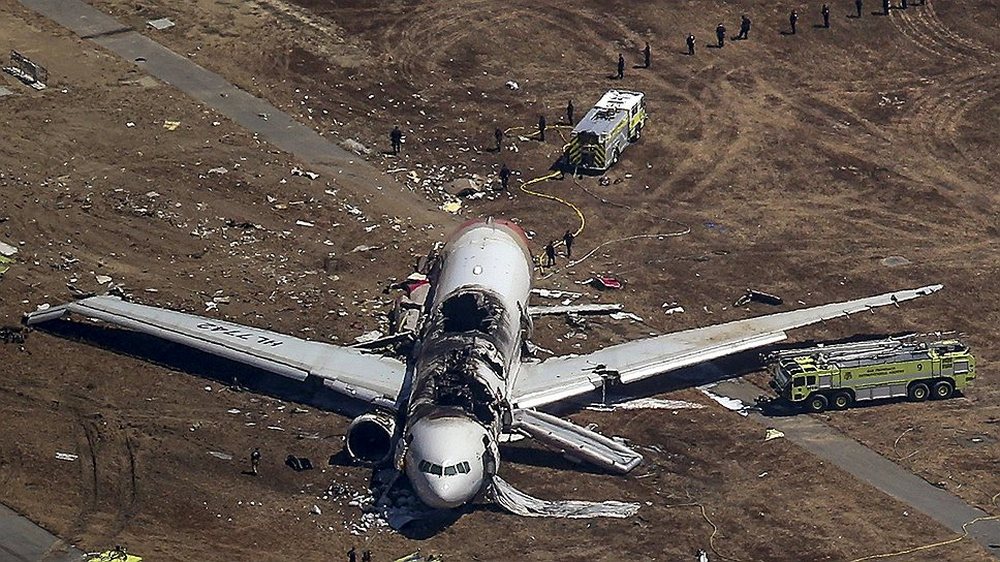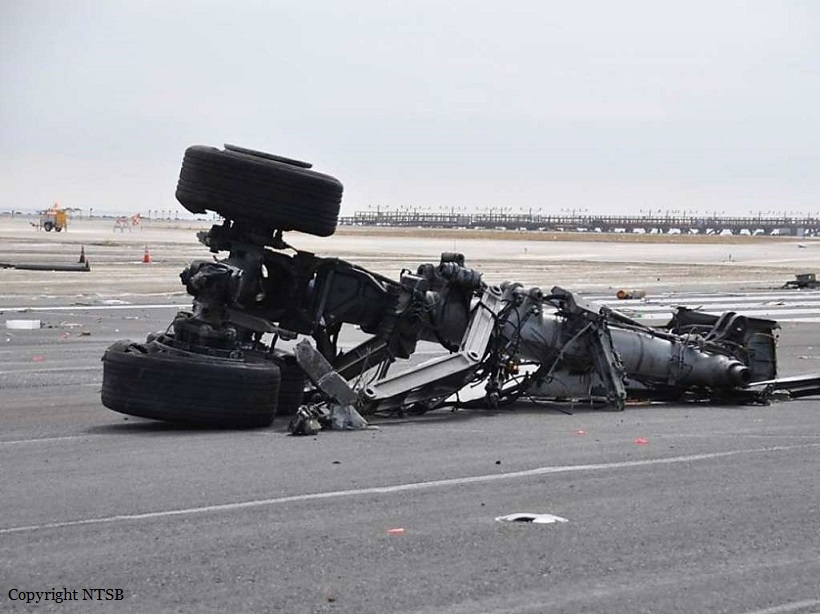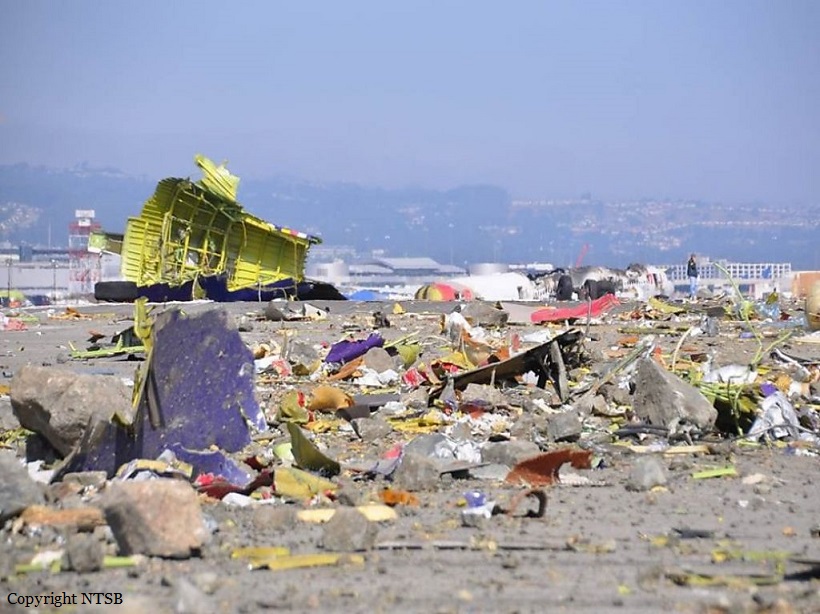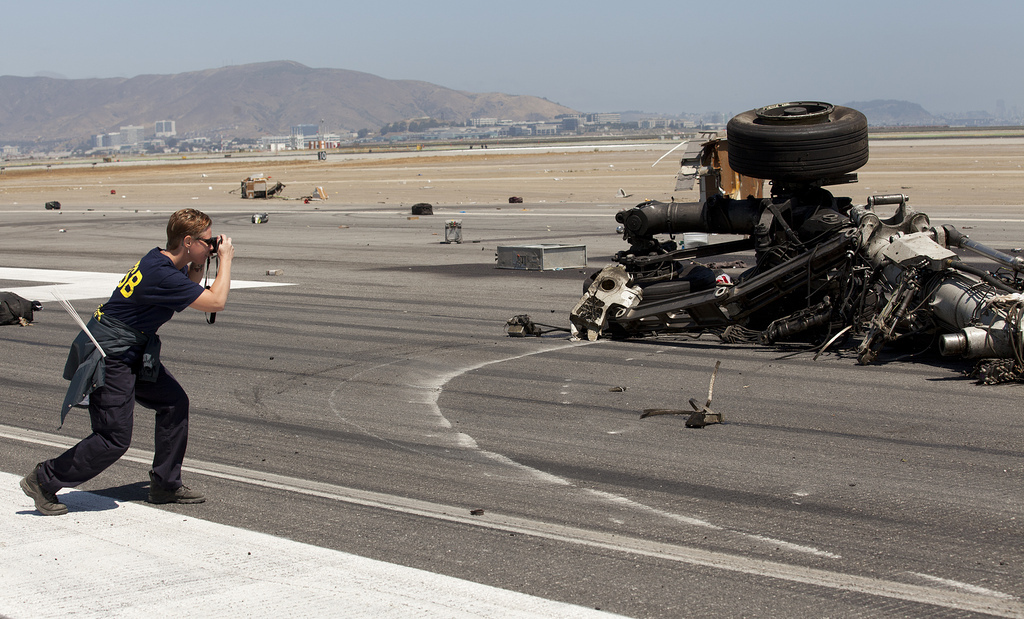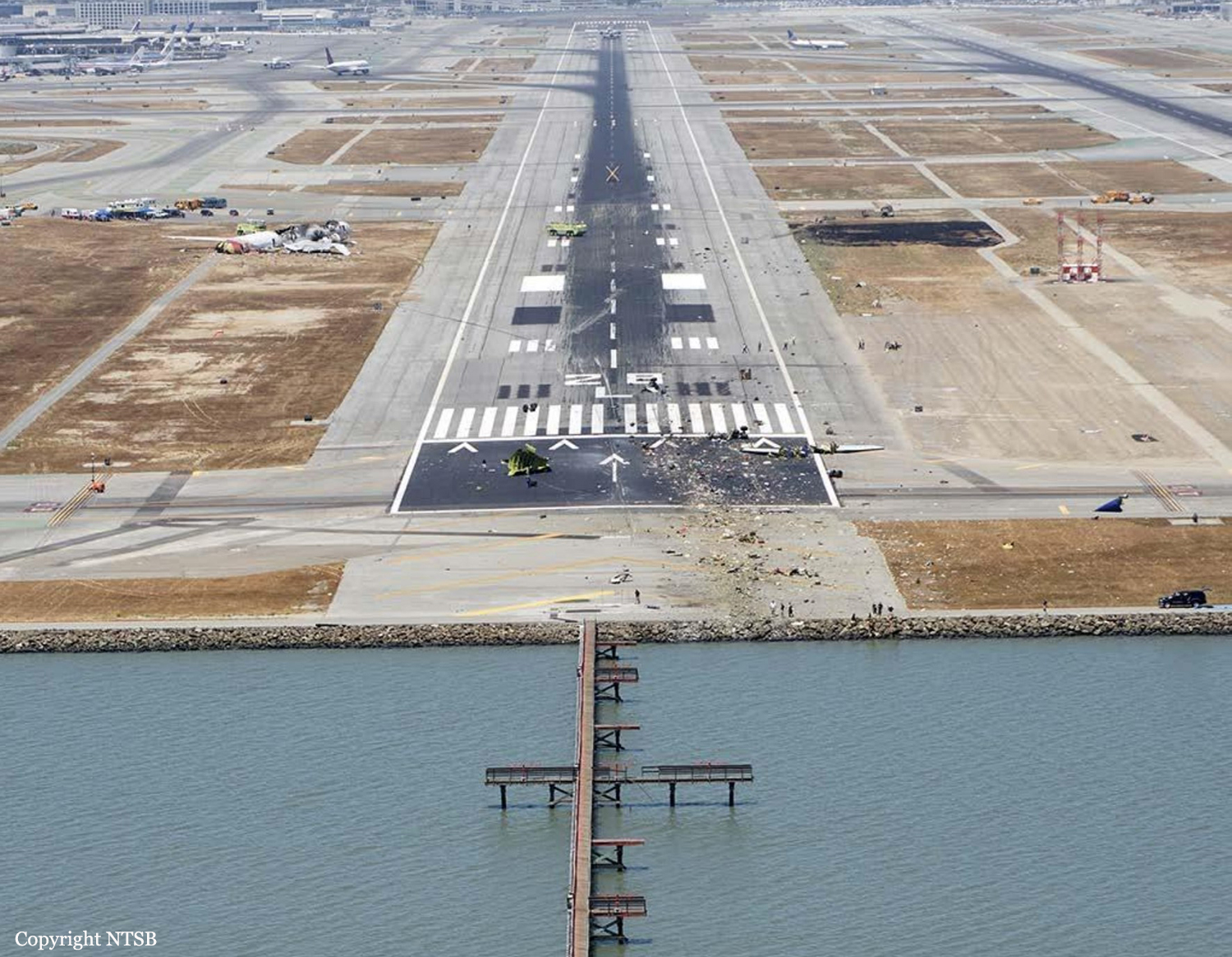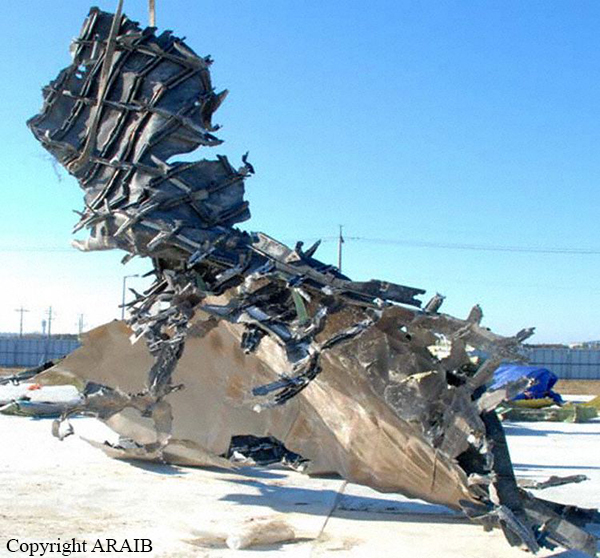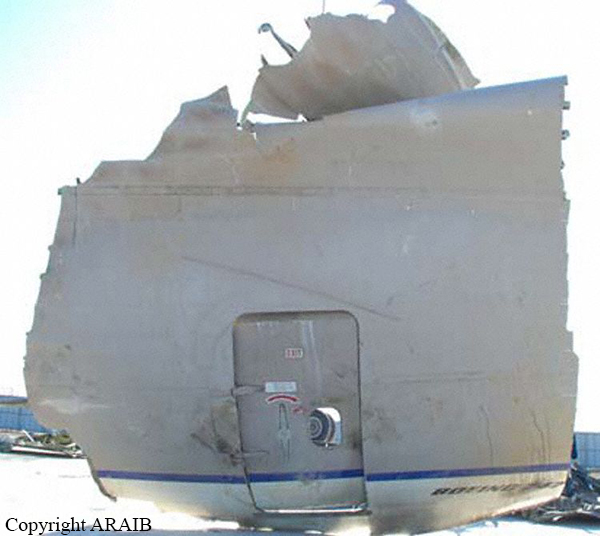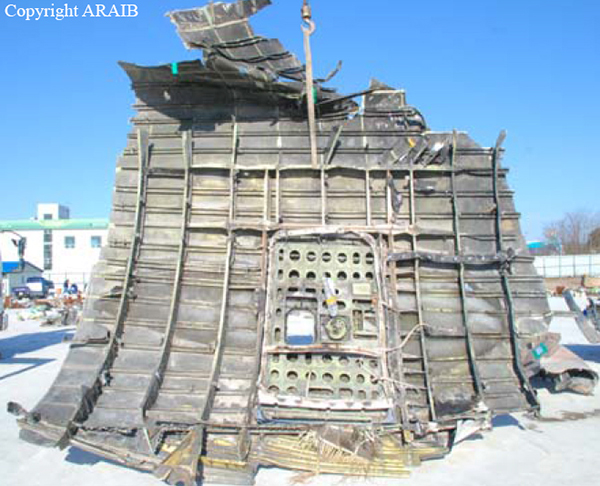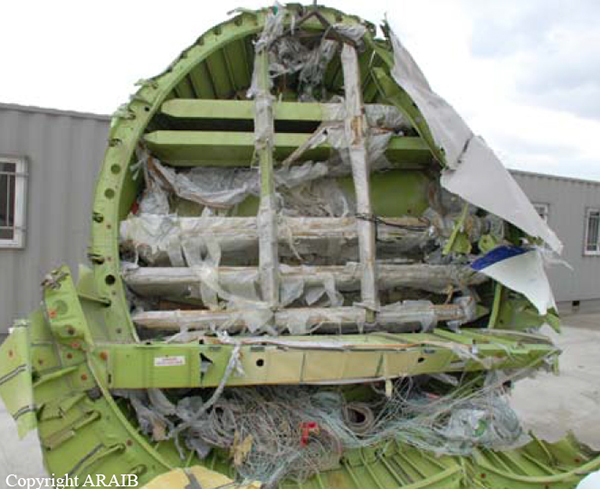Crash of an Airbus A330-322 in Mactan
Date & Time:
Oct 23, 2022 at 2310 LT
Registration:
HL7525
Survivors:
Yes
Schedule:
Seoul - Mactan
MSN:
219
YOM:
1998
Flight number:
KE631
Crew on board:
11
Crew fatalities:
Pax on board:
165
Pax fatalities:
Other fatalities:
Total fatalities:
0
Captain / Total hours on type:
9285.00
Copilot / Total hours on type:
1035
Aircraft flight hours:
78197
Circumstances:
On or about 2310LT (1510 UTC), October 23, 2022, an Airbus 330-322 type of aircraft with registry number HL7525 experienced a runway overrun during landing roll at Runway (RWY) 22 of Mactan-Cebu International Airport (RPVM), Lapu-lapu City, Cebu, Philippines. The aircraft is being operated by Korean Air. One (1) flight crew member, four (4) cabin crew members, and fifteen (15) passengers sustained minor injuries. The aircraft sustained damage and was subsequently destroyed. Instrument Meteorological Conditions (IMC) prevailed at the time of the accident. The flight took off from Incheon International Airport (RKSI), Incheon, Korea. The captain was the pilot flying (PF) when the accident happened. There was a change of runway in use from RWY 04 to RWY 22 as the variable winds shifted direction favorable to RWY 22 during the first approach for landing. While on approach for landing, after descending below the minima, during the interview, the crew encountered heavy rain and elected to go around as they lost runway visibility. A second (2nd) approach was flown, and a second (2nd) go-around at 14:26:23 UTC was performed due to a sudden increase of vertical speed followed by an aural warning “Sink rate.” While initiating the go-around, the aircraft landing gears contacted the ground. An Electronic Centralized Aircraft Monitor (ECAM) message was noted by the crew indicating a landing gear control interface unit (LGCIU) 1 and 2 fault. After reporting the go-around to the air traffic controller (ATC), the crew requested to hold over reporting point ALMAR and performed ECAM actions. While performing ECAM action on the LGCIU 1 and 2 fault, an ECAM message of BRAKES ANTI SKID FAULT was noticed. These two (2) messages were displayed to the flight crew only at 1,500 ft RA (as inhibited below), i.e., 32 seconds after the touchdown, and a third (3rd) approach for landing was decided. While initiating the third (3rd) approach for landing, the crew performed a normal landing gear down procedure in accordance with ECAM actions for LGCIU 1 and 2 faults at 14:44.29 UTC. However, the right main landing gear down-lock indicator was not illuminating on the L/G indicator panel. The crew requested from ATC to cancel the approach clearance and requested again hold over reporting point ALMAR at 14:45.30 UTC to resolve the technical issue. After the crew carried out the QRH procedure for landing with abnormal landing gear, an indication of the HYD B RSVR LO LVL message was displayed. The crew then performed another ECAM action. The flight then continued its approach to RPVM. During landing on the fourth (4th) approach, the aircraft failed to stop and overran the end of the runway. After colliding with the localizer antenna and runway approach lighting system, the aircraft came to a complete stop at the grassy portion about 235 meters from the end of runway 22 at coordinates 10o17’41.8” N 123o57’59.9” E with a final heading of 245°. The passengers evacuated utilizing the L2 and R2 cabin door slide rafts. The crew and passengers were ferried to the airport terminal by shuttle buses. Mactan Cebu International Airport Authority (MCIAA) Rescue and Firefighting Services immediately responded to help secure the aircraft. There was no fire ensued after the accident.
Probable cause:
Primary Cause Factor:
a. The increase of VSI was attributed to the forward pitch control from the captain that resulted in the ground contact before the runway.
b. The increase in vertical wind factor during the aircraft’s descent on the second approach.
c. The right hand MLG hit a 15cm step of the cemented edge of RWY 22 resulting in multiple damage/faults to the said landing gear and consequently the loss of most of the deceleration means, specifically aircraft braking failure resulting in runway overrun.
Contributory Cause Factors:
a. Loss of spoilers and reversers.
b. Aircraft brake system dormant failure.
c. The deficiency in Airbus’s Crew Operating Procedure and Alerting in relation to the A330 Blue Hydraulic Low-Level Fault.
a. The increase of VSI was attributed to the forward pitch control from the captain that resulted in the ground contact before the runway.
b. The increase in vertical wind factor during the aircraft’s descent on the second approach.
c. The right hand MLG hit a 15cm step of the cemented edge of RWY 22 resulting in multiple damage/faults to the said landing gear and consequently the loss of most of the deceleration means, specifically aircraft braking failure resulting in runway overrun.
Contributory Cause Factors:
a. Loss of spoilers and reversers.
b. Aircraft brake system dormant failure.
c. The deficiency in Airbus’s Crew Operating Procedure and Alerting in relation to the A330 Blue Hydraulic Low-Level Fault.
Final Report:
